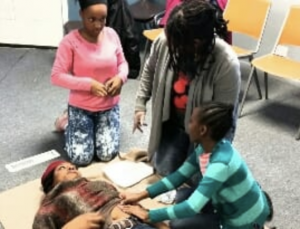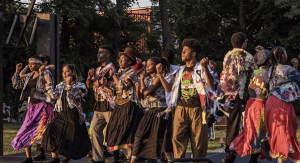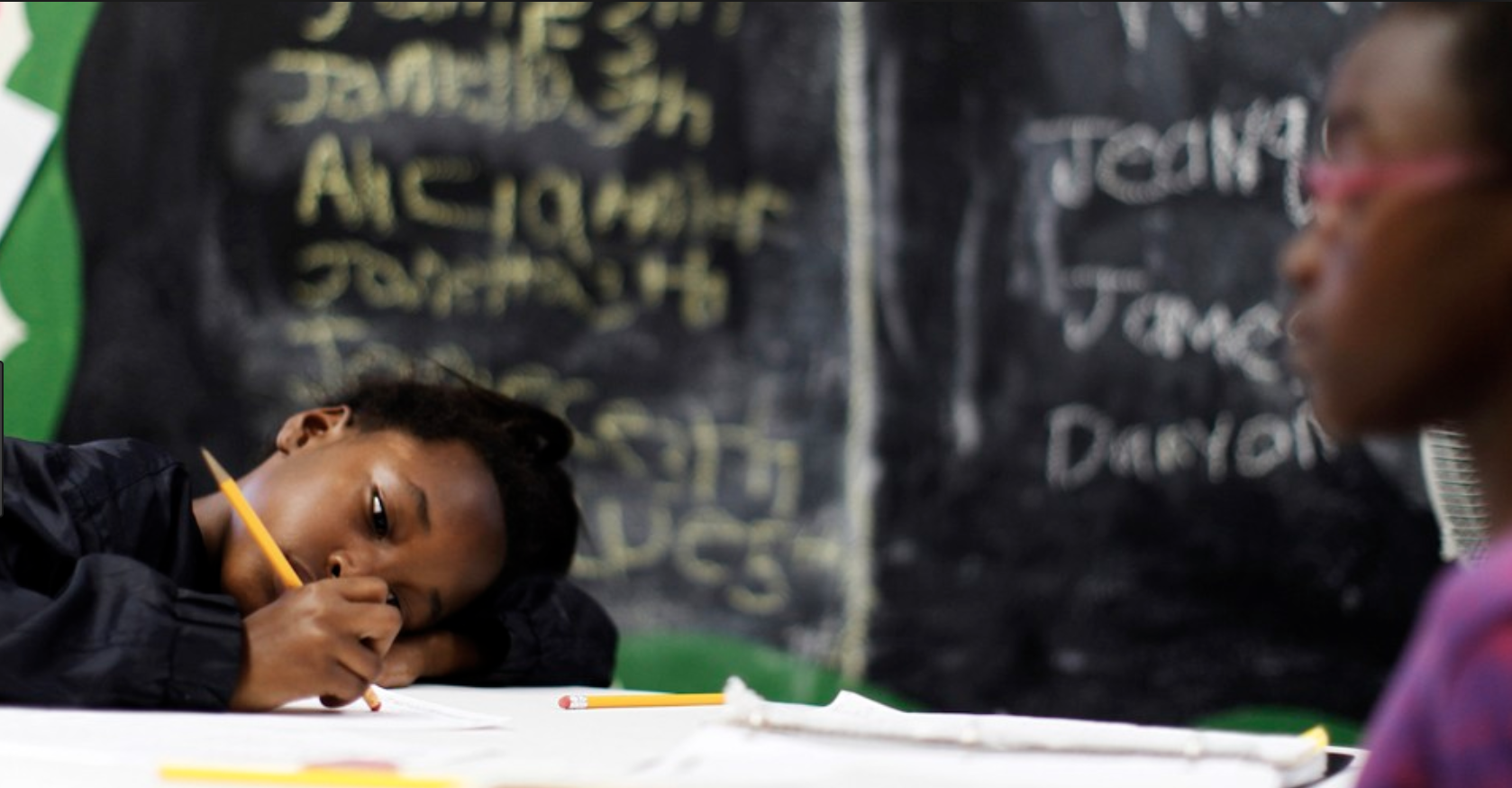Trauma-Informed Interventions that Empower Inner-City Youth
The following reports lay out trauma-informed intervention programs for youth in low income urban communities. In The Truth N’ Trauma Project: Addressing Community Violence Through a Youth-Led, Trauma-Informed and Restorative Framework, the programs employ a positive youth development and youth leadership framework that aims to empower traumatized individuals and build community. In Feasibility and Preliminary Outcomes of a School-Based Mindfulness Intervention for Urban Youth, mindfulness-based curriculums are designed to improve students’ mental health and coping capacities. Both reports suggest non-medical trauma intervention programs are effective, but underutilized.
Underserved, Disempowered
Youth from poor urban communities have a high risk for “negative outcomes related to stress, including social-emotional difficulties, behavior problems, and poor academic performance,” (Mendelson et al 985) because they experience a significant amount of adversity. Childhood adversity “triggers neurobiological events that alter brain development” and “impair stress response systems that underlie cognitive and emotion regulatory capacities” (Mendelson et al 985). Thus, violence-exposed youth are less likely to be successful in the classroom and in life due to obstacles they cannot control. Further, limited access to health resources forces youth to suffer more than they need to (Harden et al 74).
In light of limited access and outdated mental health resources, Harden et al and Mendelson et al argue for alternative trauma intervention programs to support traumatize youth and their communities. Instead of traditionally prescriptive treatments, they advocate for interventions aimed to empower and cultivate resilience.
Untraditional Trauma-Informed Practices
Harden et al. examine the effectiveness of trauma-informed practices in collaboration with restorative practices in youth violence prevention and intervention programs. These programs helped Chicago students build communities that promote “reformation, resilience, and positive relationship building,” which are “needed to support people recovering from trauma” (Harden et al 67). Harden et al.’s programs account for “community context,” making them more relevant and effective (Harden et al 65).
The theoretical perspectives that guide their programs are Harden et al 66-67):
- Positive Youth Development: Promotion of healthy youth-adult relationships, critical consciousness, youth identity development, and cultural affirmation.
- Restorative Practices: Participatory learning and decision-making to build social capital and teach social discipline to hone emotional literacy and communication skills. Focus on the rehabilitation via reconciliation with victims and community
- Psycho-education: Education on “the nature of stress.” Important to have “Peer educators” – those with personal traumatic experience – educate and mentor youth
Programs:

Journey Jamison with Peter Stark, reunited after treating his gun wound. Jamison was trained as as a first responder to gun shot wounds. She now helps create and run workshops to train other youth in her community.
Trauma-informed Practice Curriculum: Based on “cultural and identity modules, critical analysis development, and techniques to address trauma from a community perspective” (Harden et al. 68). Youth completed a trauma-informed program then worked with staff to create one for their community (Harden 68).

https://umedics.org/

https://www.determinationmedia.org/training-program/enrollment/
Media Production Program: Utilizing trauma-informed practices, theories of media and social justice, students learned about the fundamentals of production, global violence, and injustice through lectures, discussions, and trainings (Harden et al. 68
Theatre Program: Youth learned about theatre production via theories and viewpoints derived from playwright activists. Students also wrote and performed a play, which gave them a chance to voice their own social concerns and explore their identities (Harden et al 69).

Students from the Student Theatre Enrichment Program (STEP) during their 2017 performance of “AND YET, WE SHINE”
In Mendelson et al., a mindfulness-based intervention program enhanced regulatory capacities, improved attention and awareness, increased students’ ability to respond to stress, ergo combating harmful psychological effects (Mendelson et al. 986).

“Hala Khouri leads an online and in-person trauma-informed trainings designed to inform and empower yoga teachers and clinicians to recognize the various ways in which trauma appear in the body” – Sarit Rogers
Program’s objective is to cultivate “mindfulness,” which “involves attending to the present in a sustain and receptive fashion” (Mendelson 986). Mindfulness practices “train capacities for attention and enhance the ability to inhibit cognitive and emotional processes that increase or maintain stress” (Mendelson 986). These practices reduce the likelihood of mood and anxiety disorders, distress, and lower blood pressure” (Mendelson 986).
The structure of mindfulness class: students met for 45 minutes, 4 days a week, for 12 weeks (Mendelson 987). The class included yoga-based physical activity, breathing techniques, and guided mindfulness practices. Instructors began sessions with discussions to build positive relationships with students and used language students understood (Mendelson 989).
Effectiveness of New Trauma-Intervention Programs
All of these programs provide methods to address trauma via non-medical programs that aim to teach poor urban youth skills that give them greater power over their mind and behavior.
In the Harden et al program, participants experienced significant positive changes related to individual empowerment. improvements included (Harden et al. 72 & 73):
- Increased Involvement in school and community
- Enhanced understanding of socio-economic and political issues in their communities
- Stronger problem solvers
- More positive perception of self
- Better understanding of trauma
- Greater belief in personal agency
- Increased emotional literacy and coping skills
Results also indicated the importance of community support. In each program, students, staff, and participants “create, nurture, and maintain” a “community” that is “safe and peaceful,” (Harden et al 73) allowing youth to explore their trauma in a supportive environment, and become more empathetic and trusting of others. The programs offered youth opportunities to engage peers and become leaders in their communities.
In Mendelson, the mindfulness-based curriculum “enhanced self-regulatory capacities” and reduced “activation of persistent worrying” (Mendelson 991). Students became better at combating unwanted physiological and cognitive responses to stressors.
Both studies demonstrate the effectiveness of non-medical trauma-informed interventions. Participants acquired new skills amongst support, enhancing their capacity to recover from trauma and be more resilient.
Harden, T., Kenemore, T., Mann, K., Edwards, M., List, C., & Martinson, K. J. (2015;2014;). The truth N’ trauma project: Addressing community violence through a youth-led, trauma-informed and restorative framework. Child and Adolescent Social Work Journal, 32(1), 65-79.
Mendelson, T., Greenberg, M. T., Dariotis, J. K., Gould, L. F., Rhoades, B. L., & Leaf, P. J. (2010). Feasibility and preliminary outcomes of a school-based mindfulness intervention for urban youth. Journal of Abnormal Child Psychology, 38(7), 985-994.
